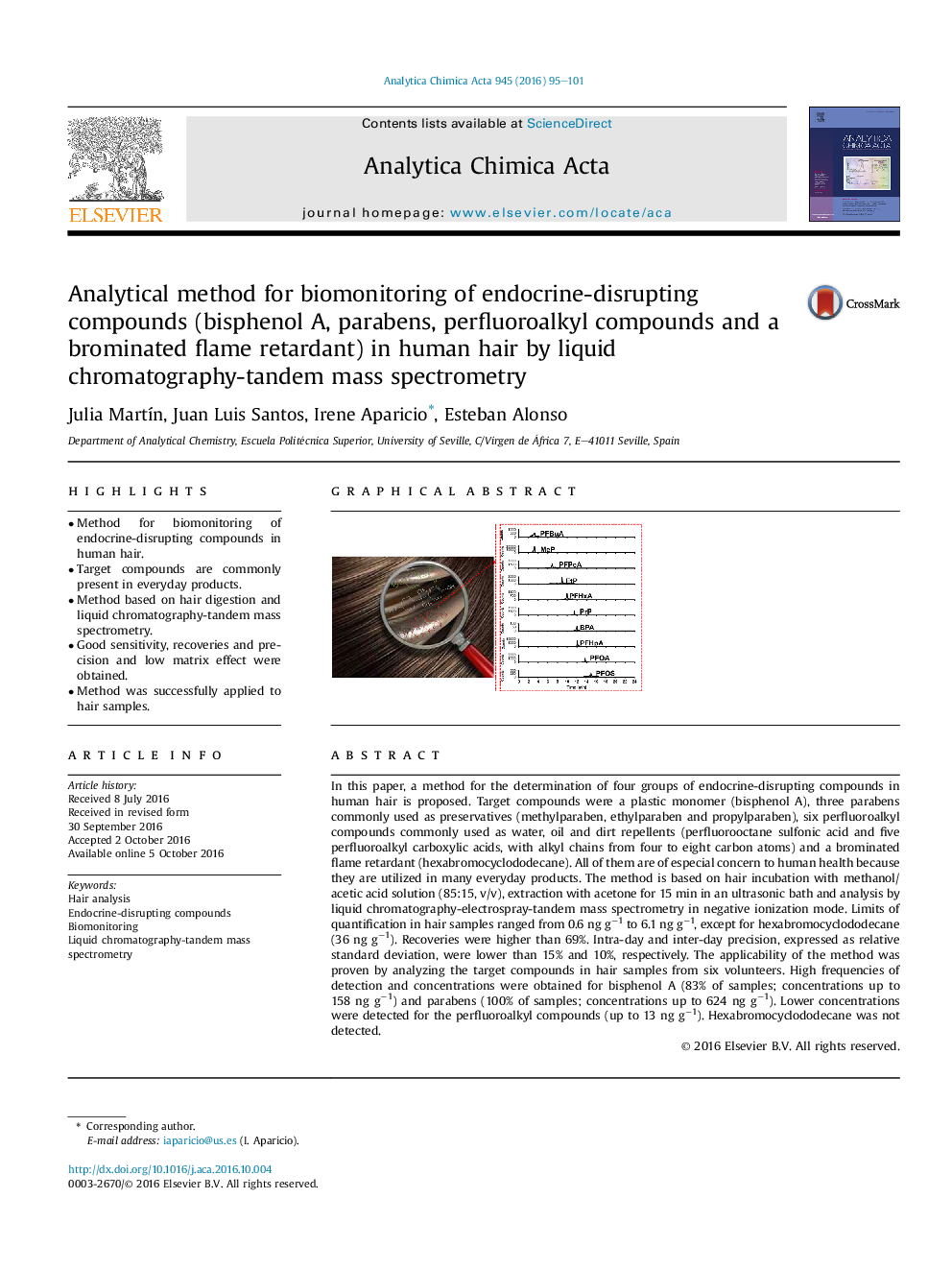| Article ID | Journal | Published Year | Pages | File Type |
|---|---|---|---|---|
| 5131371 | Analytica Chimica Acta | 2016 | 7 Pages |
â¢Method for biomonitoring of endocrine-disrupting compounds in human hair.â¢Target compounds are commonly present in everyday products.â¢Method based on hair digestion and liquid chromatography-tandem mass spectrometry.â¢Good sensitivity, recoveries and precision and low matrix effect were obtained.â¢Method was successfully applied to hair samples.
In this paper, a method for the determination of four groups of endocrine-disrupting compounds in human hair is proposed. Target compounds were a plastic monomer (bisphenol A), three parabens commonly used as preservatives (methylparaben, ethylparaben and propylparaben), six perfluoroalkyl compounds commonly used as water, oil and dirt repellents (perfluorooctane sulfonic acid and five perfluoroalkyl carboxylic acids, with alkyl chains from four to eight carbon atoms) and a brominated flame retardant (hexabromocyclododecane). All of them are of especial concern to human health because they are utilized in many everyday products. The method is based on hair incubation with methanol/acetic acid solution (85:15, v/v), extraction with acetone for 15 min in an ultrasonic bath and analysis by liquid chromatography-electrospray-tandem mass spectrometry in negative ionization mode. Limits of quantification in hair samples ranged from 0.6 ng gâ1 to 6.1 ng gâ1, except for hexabromocyclododecane (36 ng gâ1). Recoveries were higher than 69%. Intra-day and inter-day precision, expressed as relative standard deviation, were lower than 15% and 10%, respectively. The applicability of the method was proven by analyzing the target compounds in hair samples from six volunteers. High frequencies of detection and concentrations were obtained for bisphenol A (83% of samples; concentrations up to 158 ng gâ1) and parabens (100% of samples; concentrations up to 624 ng gâ1). Lower concentrations were detected for the perfluoroalkyl compounds (up to 13 ng gâ1). Hexabromocyclododecane was not detected.
Graphical abstractDownload full-size image
